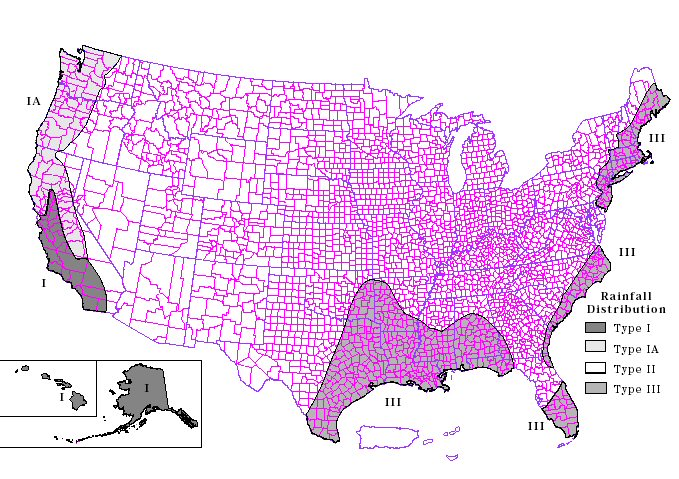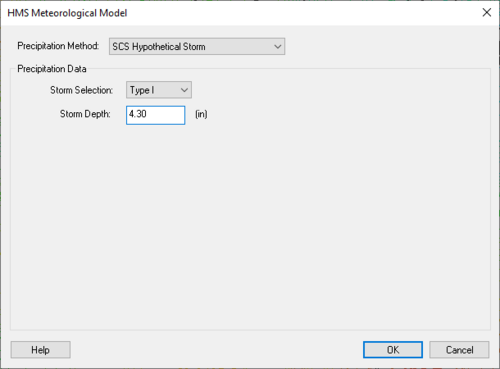WMS:HEC-HMS SCS Hypothetical Storm: Difference between revisions
No edit summary |
|||
| Line 7: | Line 7: | ||
This method does not perform any depth-area reductions. The ''HMS Meteorological Model'' dialog for this method is shown below: | This method does not perform any depth-area reductions. The ''HMS Meteorological Model'' dialog for this method is shown below: | ||
[[Image:HMSSCSHypotheticalStorm2.jpg|thumb|none|left|500 px|''HMS Meteorological Model'' dialog]] | [[Image:HMSSCSHypotheticalStorm2.jpg|thumb|none|left|500 px|''HMS Meteorological Model'' dialog for the "SCS Hypothetical Storm" method.]] | ||
== Related Topics: == | == Related Topics: == | ||
Revision as of 17:36, 4 September 2014
"The SCS hypothetical storm method implements the four synthetic rainfall distributions developed by the Natural Resources Conservation Service (NRCS) from observed precipitation events. Each distribution contains rainfall intensities arranged to maximize the peak runoff for a given total storm depth. The four distributions correspond to different geographic regions (Soil Conservation Service, 1986)." (HEC-HMS User's Manual)
The only data requirements for this method are the storm type and the storm depth. The storm depth can be determined for different areas of the United States by looking at the following map (Figure B-2 from Appendix B of the TR-55 manual).
This method does not perform any depth-area reductions. The HMS Meteorological Model dialog for this method is shown below:
Related Topics:
WMS – Watershed Modeling System | ||
|---|---|---|
| Modules: | Terrain Data • Drainage • Map • Hydrologic Modeling • River • GIS • 2D Grid • 2D Scatter |  |
| Models: | CE-QUAL-W2 • GSSHA • HEC-1 • HEC-HMS • HEC-RAS • HSPF • MODRAT • NSS • OC Hydrograph • OC Rational • Rational • River Tools • Storm Drain • SMPDBK • SWMM • TR-20 • TR-55 | |
| Toolbars: | Modules • Macros • Units • Digitize • Static Tools • Dynamic Tools • Drawing • Get Data Tools | |
| Aquaveo | ||

